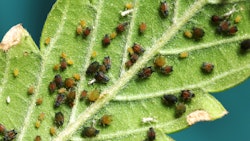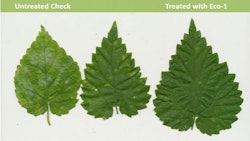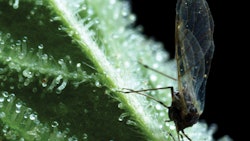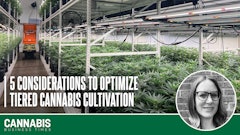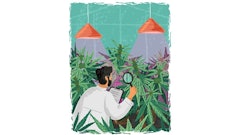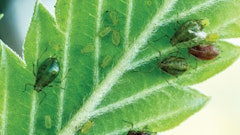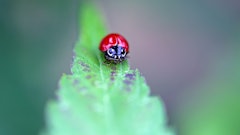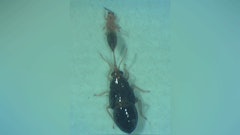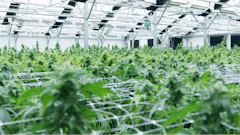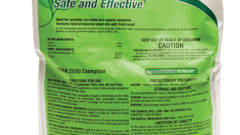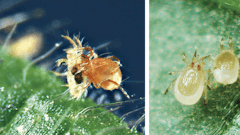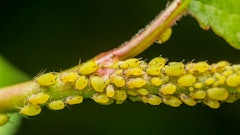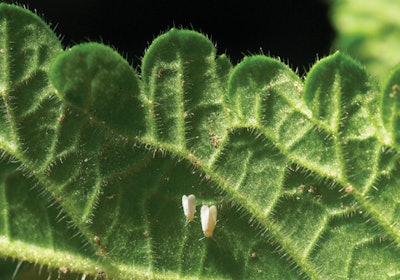
By releasing biological control agents such as parasitoids or predators, cannabis cultivators can control or eliminate harmful pest outbreaks.
The characteristics of an effective biological control agent include:
- a high female reproduction rate,
- short generation (maturation) time,
- efficient dispersal (flight) capabilities and
- a life cycle that is synchronized with generations of the prey or pest (meaning predators hatch at the same time as prey).
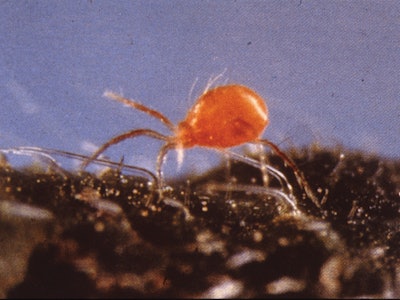
Furthermore, biological control agents must compete with pest-population development and reproduction to successfully regulate populations. In fact, the intrinsic rate of increase—the rate of increase of populations that reproduce within discrete time intervals and have generations that fail to overlap—of biological control agents must be similar to pests to provide sufficient regulation.
It also is important to understand the application procedures that will ensure success when using biological control agents, including:
- ordering biological control agents early,
- checking to make sure biological control agents are alive,
- releasing biological control agents immediately upon arrival, and
- applying biological control agents before pest populations reach outbreak proportions.
Another critical factor that can influence the effectiveness of biological control agents in regulating pest populations is environmental conditions associated with greenhouses and other indoor facilities, including: temperature, relative humidity, day length (photoperiod) and light intensity. These environmental parameters, if not appropriate for the specific biological control agent, can negatively affect foraging behavior, reproduction and survival. Therefore, the environment must be taken into consideration when implementing a biological control program.
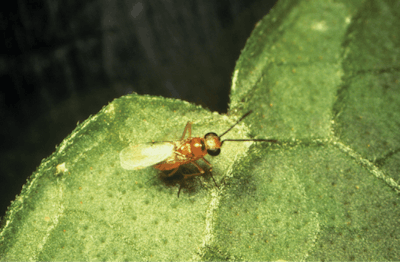
Temperature
Temperature can alter the development and reproduction rates of biological control agents and pests. For example, the predatory mite Phytoseiulus persimilis is most effective at temperatures between 20°C and 30°C (68°F and 86°F) because at this temperature range, the development time of Phytoseiulus persimilis is shorter than its prey, the twospotted spider mite, Tetranychus urticae, so your predators will be fully grown faster than their prey/your pests. However, other predatory mites such as Neoseiulus californicus tolerate higher temperatures and a lower relative humidity than Phytoseiulus persimilis.
The optimal temperature for development, foraging and reproduction is 25°C to 30°C (77°F to 86°F). However, foraging activity decreases when temperatures exceed 30°C (86°F). In addition to reducing yield or killing your crop, temperatures greater than 30°C (86°F) will shorten the development time of the twospotted spider mite to less than Phytoseiulus persimilis, which will allow twospotted spider mite populations to undergo more generations than Phytoseiulus persimilis.
Other harmful pests can thrive in the temperature range best suited for cannabis cultivation. For example, whiteflies disperse more quickly and at farther distances at temperatures between 17°C and 30°C (63°F and 86°F), which may affect the success of the greenhouse whitefly, Trialeurodes vaporariorum (whose parasitoid is Encarsia formosa, a species of chalcidoid wasp), in regulating populations. This underscores the importance of timing the life cycle and release of the predatory insects to that of the prey.

Relative Humidity (RH)
A relative humidity less than 40 percent may negatively affect egg survival, adult longevity and female reproduction of Phytoseiulus persimilis. (The effects of temperature and relative humidity on development of the larval and nymphal life stages of Phytoseiulus persimilis are presented in the table above.) Relative humidity can also impact parasitoids’ ability to attack prey. For instance, the parasitoid Encarsia formosa has a higher parasitism rate (attacks more prey) at a relative humidity between 50 percent and 70 percent. However, a relative humidity below or above this range can decrease reproduction and longevity.
Light
Furthermore, day length and light intensity may affect natural enemy-prey interactions. For example, the aphid predator Aphidoletes aphidimyza enters a diapause (resting) stage when exposed to day lengths less than 12 hours. The predatory mite Neoseiulus cucumeris, which is used to regulate populations of the western flower thrips (Frankliniella occidentalis), enters a diapause stage during winter when temperatures are less than 21°C (70°F) and the day length is less than 12 hours. A way to overcome the direct effects of short day lengths is by extending the photoperiod using supplemental lighting, which, in most cases, can prevent the induction of diapause in certain biological control agents.
Low light intensity may decrease the activity of certain biological control agents. Encarsia formosa, for example, is less effective during the fall months due to the direct effects of lower light intensities. However, the parasitoid, Eretmocerus eremicus, is more effective than Encarsia formosa in regulating populations of the greenhouse whitefly under lower light intensities. Therefore, more frequent release rates of Encarsia formosa are required to compensate for this condition. Nonetheless, the costs associated with purchasing the biological control agent and making frequent releases may be expensive.
More intense light can also indirectly affect the performance of biological control agents. For example, the heat generated from high light intensity associated with sunlight, especially during summer months, will result in Phytoseiulus persimilis inhabiting the leaf underside on the lower leaves of plants. Consequently, this will allow twospotted spider mite populations to escape exposure to the predatory mite; twospotted spider mites will migrate upward and feed on the upper portions of the plant. Cultivators can try to avoid Phytoseiulus persimilis’ migration by utilizing shade curtain systems that will reduce greenhouse light levels and temperatures.
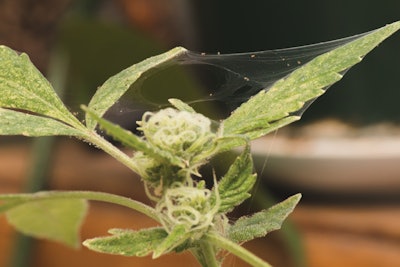
Final Thoughts
When implementing a biological control program, always take into consideration existing environmental parameters (e.g., temperature, relative humidity, day length and light intensity) to ensure success when releasing parasitoids or predators. If you have any questions or comments regarding the appropriate environmental conditions for specific biological control agents, always contact your local supplier/distributor.









